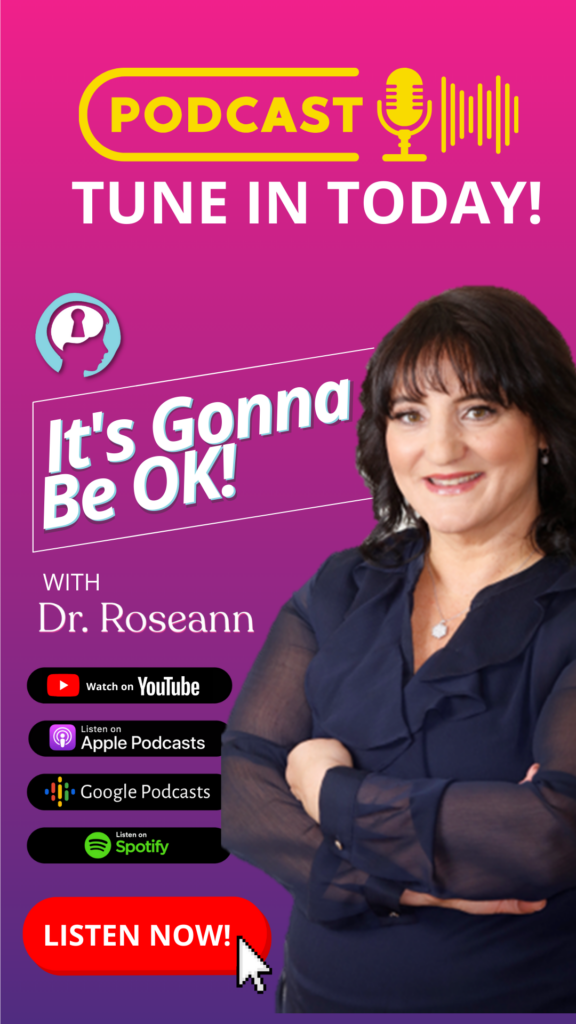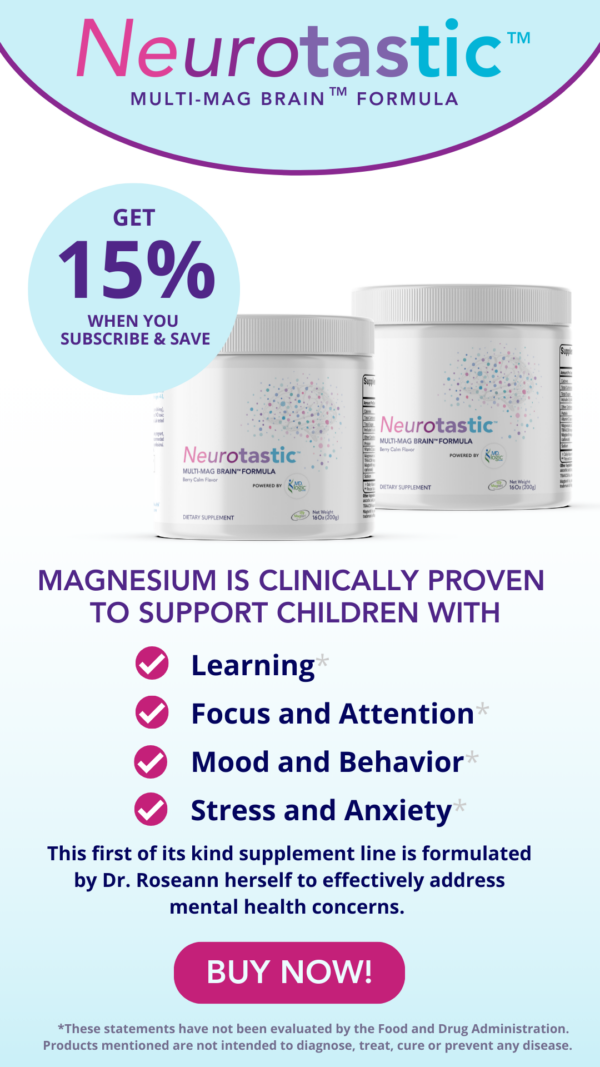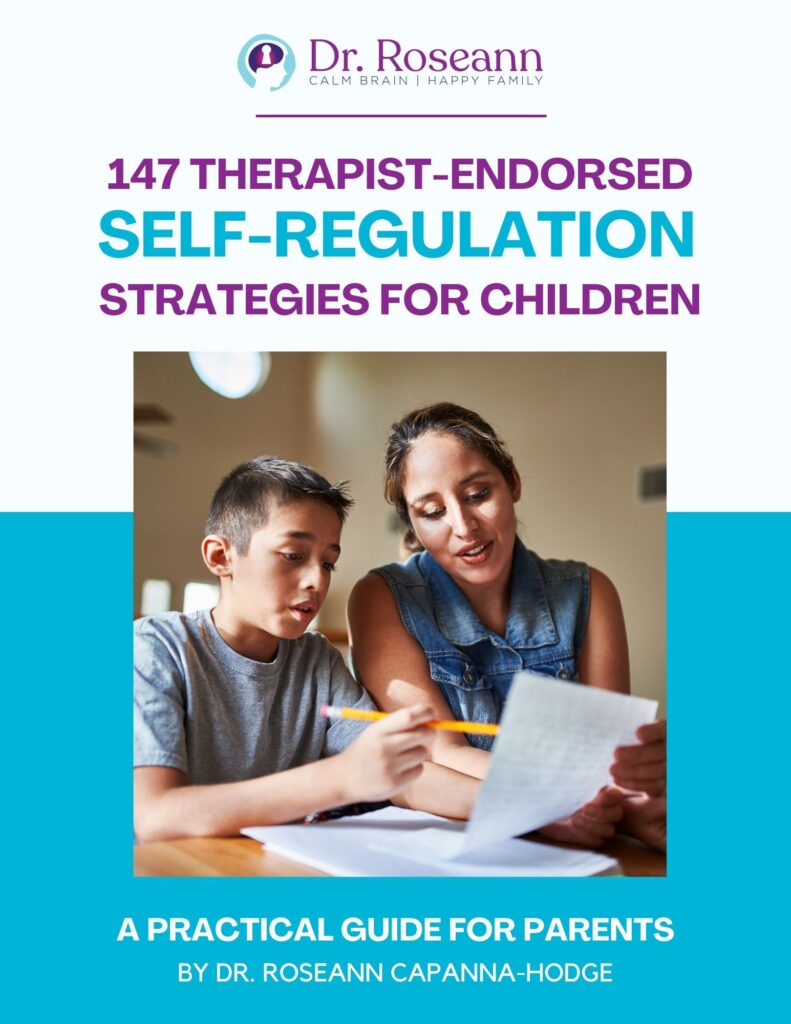As we slowly re-enter the world, some people are more than nervous. They are panicked. Everyone is worried or anxious to some degree about what lies ahead and if they might get sick, but sometimes that anxiety can get big. For some, their anxiety is so great that they don’t want to socialize or even be in public.
What they have is Re-Entry Panic Syndrome. This is a term I coined because it is more than just worrying about what will happen next. It is when feelings of panic come over you like a wave, and you can’t leave your home or you have to return to work or school. You fear leaving your cozy quarantine abode because you don’t want to get sick or feel unsafe.
While the fear of COVID-19 infection from the coronavirus is real, and we should all have some worry, some people are crippled by their panic. Just as divers must undergo a careful, staged ascent to avoid the potentially fatal effects of rapid pressure changes, individuals facing re-entry syndrome must also navigate a gradual and mindful readjustment to their pre-absence environment.
Deep-sea divers adapt to the ocean depths' high-pressure environment, a setting vastly different from the surface world. Over time, their bodies adjust to the conditions. Still, they cannot simply return to the surface without risking serious health consequences due to the formation of nitrogen bubbles in their bloodstream, which can cause pain, serious injury, or even death if not appropriately managed. Therefore, divers must follow a decompression schedule, slowly ascending and stopping at predetermined depths to allow their bodies to adjust safely to the decreasing pressure.
Similarly, individuals experiencing re-entry syndrome have spent a significant period in a “different pressure environment” — whether it be the solitude of quarantine, the intensity of a combat zone, or the isolation of a research expedition.
Upon their return, the sudden “pressure change” in their social and sensory environments can feel overwhelming, necessitating adjustment. Just as divers must decompress to acclimate to the surface conditions safely, individuals with re-entry syndrome need time, support, and possibly structured steps to readjust to their “normal” lives, easing the transition and mitigating the psychological and emotional “bends” of reintegration.
What is the Difference Between Anxiety and Re-entry Panic Syndrome?
Anxiety is your brain’s or body’s response to stress that a multitude of things can trigger. The stressor can be real or imagined or a perceived threat. Low levels of anxiety can keep you alert and engaged, but high levels of anxiety can lead to a clinical problem.
There are several types of anxiety disorders, including generalized anxiety disorder (GAD), panic disorder, and phobia-related disorders. People with the most common type of anxiety disorder, GAD, spend an excessive amount of time worrying about several things.
With Re-Entry Panic Syndrome, it is specific to worry about re-entering your community, full-time job, or school after a pandemic quarantine due to the fear of becoming ill. The fear of becoming sick if they leave their home is overwhelming and can result in physical, behavioral, or emotional distress. The COVID-19 pandemic might make people have more panic attacks or make their panic disorder worse (Javelot & Weiner, 2020).
What Are Signs and Symptoms of Re-entry Panic Syndrome?
Just like most mental health issues, the symptoms of Re-Entry Panic Syndrome can be physical, behavioral, or emotional.
- Physical symptoms can include shortness of breath, chest pain, panic attacks, sweating, nausea, and a racing heartbeat.
- Behavioral Symptoms can include avoidance, becoming upset when others close to them re-enter after quarantine, difficulty sleeping, irritability, and a general change in behavior.
- Emotional symptoms include worry, mood fluctuation, anger, upset, or tearfulness.
What Should You Do to Lessen Your Worries About Re-entering Society?
The first thing a person who has anxiety of any kind should do is practice good self-care so they can lessen their stress and sleep better, which will reduce their overall anxiety. If you don’t have your oxygen mask on, then you can’t breathe. Self-care isn’t a luxury but a necessity in this time of unprecedented stress.
It is essential to check in and connect with friends and family. Try to spend time with generally more positive friends who can help lift you out of your funk.
Getting out is essential if you have been in your house for weeks. Start with going to one place you feel safest, then add another place every few days. These safe and successful exposures will show your subconscious brain that you are safe and can talk back to your worries. Sometimes, those small successes can lead to significant shifts.
If you are worried about returning to work, it is imperative to talk to your employer about when they plan on having you return and what that looks like. Always be respectful and ask questions, but realize they are doing their best and can’t always answer every question you have. It is okay to tell your employer or human resources staff you are extremely worried.
What Are the 4 Steps a Person Can Take to Lessen Their Anxiety and Panic?
With our trademarked REPS Protocol™, we teach people how to break free from their re-entry panic with four steps.
- Resperate
- Envision
- Positivity
- Stress Management
With REPS, we teach the importance of breathwork in calming the brain and body. Breathwork impacts the autonomic nervous system (ANS), which, often subconsciously, receives information from the environment and other parts of the body and regulates the activity of the organs.
The ANS is composed of the parasympathetic and sympathetic symptoms, both of which have a direct impact on how we manage stress. The sympathetic nervous system controls the body's fight-or-flight response. The other part is the parasympathetic nervous system, which works to relax and slow down the body's response.
When stressed or anxious, your breathing can get irregular, and shallow breath affects your ANS. When we breathe deeply, more carbon dioxide enters our blood, which quiets down parts of the brain, such as the emotional centers that handle your anxiety response: the limbic system and the amygdala. On the other hand, slow, deep breathing functionally resets the autonomic nervous system.
When you do a 4-7-8 breath, you are working to exhale a few counts longer than you inhale. When you do this, the vagus nerve, which goes from the neck down through the diaphragm, sends a signal to your brain to increase your parasympathetic nervous system and decrease your sympathetic nervous system, which leads to a calmer state.
With the next step, Envision, we teach the power of visualizing good outcomes. Being mindful of our surroundings and using visualization to reduce stress have become an increasingly popular technique. The intent of the practice of visualization is different from that of meditation.
Visualization is a powerful way to clarify your goals and help manifest them. Successful people spend a lot of time visualizing what they want. First, they hone in on their authentic purpose and then create goals.
They “see” what they wish to do, spend time visualizing that outcome, and pair it with action around those goals that move them to positive outcomes. Whether you have a goal to manage stress better or address a specific issue, purposeful visualization is a great way to create positive momentum by getting to the core of the problem and its resolution.
Step three involves embodying Positivity in your thinking and words. Are you a glass half full or a glass half empty? Research shows that those with a positive outlook are happier and live longer (Diener & Chan, 2011). While some are born cheerful and others are not, you can develop a sunny outlook with intention and practice.
Catch yourself being negative and simply flip your internal and external dialogue. Didn’t get the seat you wanted at your favorite restaurant? Try to say, “I can’t wait to check out this window, or now I am closer to the server to get better service.” Those subtle changes in how you view things help you to remain positive in any situation.
The final step is making time every day for stress management. Calming that nervous system down allows you to think. When your stress is at maximum capacity, your frontal lobes go offline, and it is almost impossible to have a rational thought, let alone react rationally.
Our over-activated nervous system causes you to go into a flight, fight, freeze response. So, nurturing your nervous system is critical to thinking and reacting calmly to control these anxious and panicked feelings and behaviors.
The daily practice of breathwork, meditation, biofeedback, neurofeedback, and yoga are proven natural techniques and therapies that children and adults can effectively calm their brain and body down so they can restore their attention, mood, and thinking.
How Can a Parent Manage Their Anxiety When a Child or Teen Can and Wants to Re-enter the World?
The most important thing a parent should do is recognize that they must put their oxygen mask on before they talk about this with their child or teen. If they are observably anxious, your child will feel it. The flip side is that our kids will feel reassured when we are calm.
Parents have to be open to the idea of the world reopening. They should sit down with their children and find out what they want and can do in their community. They should calmly review what their child or teen wants to do, paint a picture of what it will look like, and discuss the parameters. Start with short outings or public meet-ups and do activities you can all feel comfortable and safe with.

What Should Schools Do to Help Ease Parent's Anxiety About Their Child Returning to School?
With so much unknown about what the school year will look like in the fall, we have to plan for several contingencies and follow the CDC considerations for school guidelines. Schools will be different and involve hybrids of online and in-class learning.
Schools have a lot of work ahead of them to prepare for the educational needs of their students, along with the safety needs of students and employees. They also will have to address the emotional needs of their staff, students, and families and explicitly address their concerns with a formal plan.
Having already helped several independent schools and school districts develop a student, family, and teacher mental health plan for the fall of 2020, there are a lot of tangles, and the plan needs to be very well thought out and explicit.
How Can an Employer Help an Employee Afraid to Return to Work?
First, employers need to make sure they are having ongoing discussions about what they are doing to ensure the safety of employees and customers. Employers need to put their sanitizing and safety procedures in writing.
Employers need to be prepared for a range of emotions from their employees. One employee may be immobilized by fear, and another may be excited to return. These are all valid feelings; anticipating different emotions can help you give your employees what they need and make this a win-win.
It is essential to ask your employees how they are feeling and what they need so you can gauge their responses and needs before asking them to return to work. If you have an employee assistance program, using their expertise to help employees with Re-Entry Panic Syndrome is a good idea. If you don’t have an EAP program, check with your HR staff or consultant to find out what kind of mental health support you can legally offer your staff, as regulations vary by state.
Work will look different going forward, so paint the picture the best you can for your employees, and this will help alleviate stress. More than ever, companies must implement stress and wellness initiatives to retain employees. They need to support the employees and maintain wellness for the organization. The company culture and wellness initiatives are proactive ways to do that.
When Should You Seek Help?
There are many things one can do to lessen stress and anxiety, but if you are stuck in an anxious and panicked mode, then your life is impacted. If you are worried that re-entering the world is interfering with your daily functioning, including returning to work or leaving your home when the quarantine has been lifted, you should seek help from a professional licensed therapist.
Clinically effective natural therapies, such as neurofeedback or biofeedback, mindfulness, and meditation, can help address Re-entry Panic Syndrome, anxiety, Executive Functioning, ADHD, OCD, depression, concussion, and numerous other conditions.
What should you do to lessen your worries about re-entering society?
Taking care of yourself, talking to friends and family, slowly going out more, and communicating with your employer can all help ease worries about returning to society.
What are the four steps a person can take to lessen their anxiety and panic?
The REPS Protocol™ suggests four steps: Resperate (breathing exercises), Envision (visualizing positive outcomes), Positivity (focusing on positive thoughts), and Stress Management (practicing techniques like meditation or yoga). These can help calm your mind and body.
How can a parent manage their anxiety when a child or teen can and wants to re-enter the world?
Parents should focus on staying calm themselves because kids pick up on their parents' feelings. They should talk to their children about their plans to go out, start with small outings, and ensure everyone feels safe.
What should schools do to help ease parents' anxiety about their child returning to school?
Schools should create clear plans for safety and communication, following guidelines from organizations like the CDC. They should address not only educational needs but also the emotional needs of students, families, and staff.
How can an employer help an employee who is afraid to return to work?
Employers should communicate openly about safety measures, ask employees how they feel, and offer support like employee assistance programs. They should be flexible and understanding of the different emotions employees may have.
When should you seek help?
If feelings of panic and anxiety are significantly affecting your daily life, like making it hard to work or leave your home, it's essential to seek help from a licensed therapist. There are effective therapies available for managing Re-Entry Panic Syndrome and related conditions.
Citations
Diener, E., & Chan, M. Y. (2011). Happy People Live Longer: Subjective Well-Being Contributes to Health and Longevity. Applied Psychology: Health and Well-Being, 3(1), 1–43. https://doi.org/10.1111/j.1758-0854.2010.01045.x
Javelot, H., & Weiner, L. (2020). Panic and Pandemic: Narrative Review of the Literature on the Links and Risks of Panic Disorder as a Consequence of the Sars-Cov-2 Pandemic. L’Encéphale, 47(1). https://doi.org/10.1016/j.encep.2020.08.001
Dr. Roseann is a mental health expert in Anxiety who is frequently in the media:
- Fox 5: What is Re-Entry Panic Syndrome?
- ABC 7 News: How is Re-Entry Panic Syndrome different from Anxiety?
- CBSN: How Re-Entry Panic Syndrome affects employees
Always remember… “Calm Brain, Happy Family™”
Disclaimer: This article is not intended to give health advice and it is recommended to consult with a physician before beginning any new wellness regime. *The effectiveness of diagnosis and treatment vary by patient and condition. Dr. Roseann Capanna-Hodge, LLC does not guarantee certain results.
Are you looking for SOLUTIONS for your struggling child or teen?
Dr. Roseann and her team are all about science-backed solutions, so you are in the right place!
Grab your complimentary copy of
147 Therapist-Endorsed Self-Regulation Strategies for Children: A Practical Guide for Parents
Dr. Roseann is a Children’s Mental Health Expert and Licensed Therapist who has been featured in/on hundreds of media outlets including The Mel Robbins Show, CBS, NBC, PIX11 NYC, Today, FORBES, CNN, The New York Times, The Washington Post, Business Insider, Women’s Day, Healthline, CNET, Parade Magazine and PARENTS. FORBES called her, “A thought leader in children’s mental health.”

She coined the terms, “Re-entry panic syndrome” and “eco-anxiety” and is a frequent contributor to media on mental health.
Dr. Roseann Capanna-Hodge has three decades of experience in working with children, teens and their families with attention-deficit hyperactivity disorder (ADHD), autism, concussion, dyslexia and learning disability, anxiety, Obsessive Compulsive Disorder (OCD), depression and mood disorder, Lyme Disease, and PANS/PANDAS using science-backed natural mental health solutions such as supplements, magnesium, nutrition, QEEG Brain maps, neurofeedback, PEMF, psychotherapy and other non-medication approaches.
She is the author of three bestselling books, It’s Gonna Be OK!: Proven Ways to Improve Your Child's Mental Health, The Teletherapy Toolkit, and Brain Under Attack. Dr. Roseann is known for offering a message of hope through science-endorsed methods that promote a calm brain.
Her trademarked BrainBehaviorResetⓇ Program and It’s Gonna be OK!Ⓡ Podcast has been a cornerstone for thousands of parents facing mental health, behavioral or neurodevelopmental challenges.
She is the founder and director of The Global Institute of Children’s Mental Health, Neurotastic™Brain Formulas and Dr. Roseann Capanna-Hodge, LLC. Dr. Roseann is a Board Certified Neurofeedback (BCN) Practitioner, a Board Member of the Northeast Region Biofeedback Society (NRBS), Certified Integrative Mental Health Professional (CIMHP) and an Amen Clinic Certified Brain Health Coach. She is also a member of The International Lyme Disease and Associated Disease Society (ILADS), The American Psychological Association (APA), Anxiety and Depression Association of America (ADAA) National Association of School Psychologists (NASP), International OCD Foundation (IOCDF).
© Roseann-Capanna-Hodge, LLC 2024
Disclaimer: This article is not intended to give health advice and it is recommended to consult with a physician before beginning any new wellness regime. *The effectiveness of diagnosis and treatment vary by patient and condition. Dr. Roseann Capanna-Hodge, LLC does not guarantee certain results.










